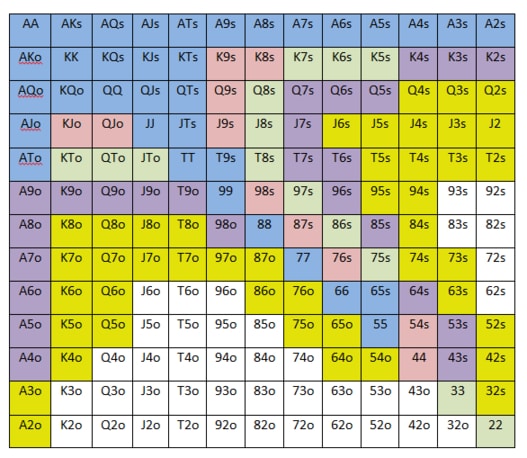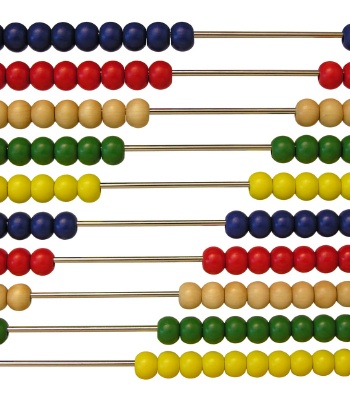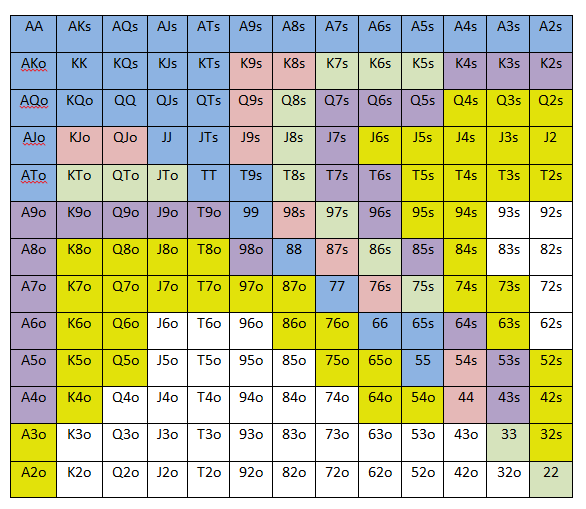Oct 25, 2016 The next video is starting stop. Find out why Close. Sit'n'Go Poker - Short Handed, Short Stack Poker Strategy. It was a short stack, short handed poker game so check out. Of course if we just waited for the two or three best poker starting hands then we wouldn’t actually play many hands as the probability of these cards being dealt is only once in a while. So we combine the position concept with our starting hand concept, to allow us to only play a narrow starting hand selection when out of position and to play a wider range of starting hands when we are in position.
Full ring poker tables, or those with a 9 or 10-player max, are a good place to learn no-limit Texas holdem. The reason why is because you don’t see the blinds as often, meaning full ring tables are a cheaper way to practice.
But most players don’t remain exclusive to these games. They often branch out to shorthanded tables, either for a different cash game experience or because they’re forced to in tournaments.
Shorthanded poker requires a different approach than full ring, because you’re dealing with fewer players. But the upside is that you can also make more money due to a greater volume of hands.
If you’re new to shorthanded poker, keep reading as I cover everything a beginner should know. Specifically, I’ll discuss more about this game, why you should play smaller tables, and what shorthanded Texas holdem strategy is.
What is Shorthanded Texas Holdem?
A shorthanded poker table features 6 or fewer players. You’ll also see these tables referred to as 6-max games.
6-max cash games never allow more than six players to enter the game. You’ll see a good number of these in online poker lobbies.
Poker tournaments begin with full ring tables, but they see shorthanded tables develop as more players are eliminated.
One of the tournament director’s jobs is to spot these shorthanded tables and consolidate them with larger tables.
6-max games play faster than full ring tables in both live and online play. Here are some common averages for different types of poker tables.
- 6-max online table = 80 hands per hour
- Full ring online table= 60 hands
- 6-max live table = 30 hands
- Full ring live table = 20 hands
Why Should You Play Shorthanded Texas Holdem?
Here are the three best reasons to play shorthanded Texas holdem.
- More action.
- Less folding.
- More hands per hour for profitable players.
Many recreational poker players become bored with folding hand after hand. But this is the dynamic in full ring games, because more players mean the potential for a stronger winning hand.
Tables with six or fewer players don’t see as strong of winning hands. This means that you can play a wider range of cards and still have a chance of taking the pot down.
Shorthanded holdem players will appreciate the fact that they won’t be folding as many hands on average.
If you’re a successful holdem player, then you’ll also like how shorthanded games can increase your profits. The fact that you see more hands also means that you have additional chances to win money.
How Does Shorthanded Texas Holdem Differ from Full Ring Holdem?
I’ve already covered the basics of how shorthanded Texas holdem differs from full ring games. But how does the overall strategy and gameplay change?
The biggest strategy change comes with what kind of starting hands you should be willing to play.
A tight-aggressive (TAG) approach works best in full ring games, where you can sit back and play premium hands. But the blinds will really eat your chip stack in shorthanded cash games and tournaments.
For example, you might not normally raise with AJ in middle position on a 9-player table. But this can be a good hand to raise within a shorthanded game.
It’s good to be aggressive on the button in unraised pots. But this is especially important on smaller tables, where raising with any decent hand can take the pot down.
Overall, 6-max games play faster and more aggressively than what you’ll see at full ring tables. Furthermore, many of these shorthanded pots are won before the flop.
Strategy for Short Handed Texas Holdem
The general strategy between full ring and shorthanded holdem is that the latter requires more aggressive play.
Of course, this doesn’t tell you anything specific. This is why I’m going to cover 7 tips that all shorthanded Texas holdem beginners should know.
1 – Play Tight in the Beginning
This tip contradicts what I’ve discussed so far. Nevertheless, you should play almost as tight as you do in full ring games when starting out in shorthanded holdem.

Playing aggressively leads to more losses for players that don’t have a good feel for smaller tables. And inexperienced 6-max players sometimes get carried away by playing too many hands.
Note:A good full ring player only plays around 15-20% of their hands on average. A good shorthanded player will play 25-35% of their hands.
The number of hands you play shouldn’t increase by a tremendous amount, such as 45-55%. Instead, you want to gradually increase your playable hand range.
A beginner should focus on playing premium hands, along with a few hands outside the lines of big pocket pairs, mid pocket pairs, and high suited connectors.
The goal is to increase your playable hand range as you become more confident in your skills and in analyzing opponents. I’ll discuss more on what hands you should play in Tip #3.
2 – Raise into Hands – Don’t Limp
One of the keys to becoming a successful poker player is realizing that your strategy should vary based on opponents and the table dynamic. But a good general poker strategy rule is that you want to make preflop raises into unopened pots, or those that haven’t seen a raise yet.
Here are three goals that you accomplish by raising preflop in unopened pots:
- You show hand strength.
- You force players to pay to see the flop.
- You build fold equity for post-flop play.
Beginning with the first point, raising shows players that you likely have a strong hand. Therefore, they’re less likely to try and bluff you out of the pot.
Regarding the second goal, you want to limit the number of players who see the flop when you have a strong hand.
Your goal should be to isolate a single player so that you have a better chance of winning the hand if it goes to the showdown. Contrast this to multiple players seeing the flop, which decreases the chances that your strong cards will eventually win the hand.
The best way to thin the field out is with a raise worth 3x the big blind (bb). This is just enough to where few players won’t call with speculative hands, but also low enough to where you can get out of the hand cheaply when re-raised.
Of course, I’m not saying that you should fold to every re-raise. But if you’re holding pocket jacks or AK and worried that somebody has a better hand, you won’t feel as bad about sacrificing 3xbb.

As for the third goal, building fold equity increases the chances that you can take down the pot before the showdown.
This goes back to the first point of showing hand strength. When players believe that you have a good preflop hand, they’re more likely to think that you’ll flop a strong hand.
This sets you up for good continuation betting (c-betting) scenarios in case you miss the flop. A c-bet combined with fold equity is more likely to convince your opponent to fold and help you take the pot.
Limping is a passive move that doesn’t show hand strength or build fold equity. Furthermore, it’s likely that you’ll be re-raised by somebody who thinks they can steal the pot.
It makes sense to limp into pots in specific situations, like when your table is full of calling stations whom you can out-play post-flop. But most of the time, you should either fold, raise, re-raise, or call a raise/re-raise.
3 – Play in Position
The most desirable position to be in on any poker table is the dealer’s seat (a.k.a. the button) because you act last after other players. This means you have more info on opponents and can use their betting actions to judge their hand strength.
In contrast, the worst spots to be in are the seats closest to the dealer’s left (a.k.a. early position). Anybody raising from the spots should have good hand strength because they must make their bets before anybody else.
Here are the different table positions in a 6-max game:
- Early position = Small blind, big blind, seat to big blind’s left (under the gun or “UTG” ).
- Middle position = Seat to UTG’s left.
- Late position = Seat to the button’s right (a.k.a. the cut-off or “CO”) and the button.
The great thing about playing from the CO and late position is that you act after other players. If an early position TAG player makes a 3x-4xbb raise, you can fold something like KQs that you might otherwise play.
Early position is at a huge disadvantage because they could easily be re-raised by a later player. This is why you should narrow your hand range from this spot and avoid playing speculative hands.
The blinds act last before the flop. But they’re still considered early position because they act before everybody post-flop.
Middle position is aptly named because they’re sitting in an in-between spot. You can raise with a wider range here in unopened pots, but you still need to worry about the button and CO.
You’ll see table position play a heavy factor in the starting hand advice listed below.
4 – Follow a Starting Poker Hand Chart
I can’t stress enough how important is to base your strategy on the situation. This means that you shouldn’t always have a strict strategy for starting hands.

But a starting hand chart helps immensely in the beginning as you learn shorthanded Texas holdem.
If you’re coming from full ring holdem, or you’re new to poker overall, then you won’t have a good idea on what starting hands to play. But by following a chart, you can quickly master what hands play well on a shorthanded table.
Here’s a starting hand chart that shows when to raise, call, and 3-bet from each 6-max position. (Note that “s” means suited.)
Small Blind
- Raise = AA, KK, QQ, JJ, TT, 99, AKs, AK, AQs, AQ, AJs, AJ, KQs
- Limp = 88, 77, 66
- 3-bet (third bet on a street) = AA, KK, QQ
Big Blind
Starting Hands Poker
- Raise = AA, KK, QQ, JJ, TT, 99, AKs, AK, AQs, AQ, AJs, AJ, KQs
- Limp = N/A
- 3-bet = AA, KK, QQ
Under the Gun
- Raise = Most pocket pairs (AA to 44), AKs, AK, AQs, AQ, AJs, AJ, KQs
- Limp = No hands
- 3-bet = AA, KK, QQ
Middle Position
- Raise = Any pocket pair (22+); suited ace hands from AKs to A9s; offsuit ace hands from AK to AJ; and KQs, KQ, QJs
- Limp = Low pocket pairs (a.k.a. “set mining”); AKs, AK, AQs, AQ, KQs
- 3-bet = AA, KK, QQ
Cut-off
- Raise = Any pocket pair (22+); suited ace hands from AKs to A6s; offsuit ace hands from AK to AT; other suited hands from KQs to T8s; and other offsuit hands from KQ to JT
- Limp = Middle and lower pocket pairs
- 3-bet = AA, KK, QQ, JJ
Button
- Raise = Any pocket pair (22+); any suited Ax combo; offsuit ace hands from AK to A9; other suited hands from KQs to 86s; other offsuit hands from KQ to T9
- Limp = Middle and lower pocket pairs
- 3-bet = AA, KK, QQ, JJ
You can see that there’s an overlap in hands you should raise and limp with regarding certain suited connectors and pocket pairs. I suggest either raising or folding these overlapping cards (no limping) until you have a better understanding of your opponents and the table dynamic.
Also note that these starting hands are for a shorthanded table with six players. You should loosen up your starting hand requirements even more when there are 5 or fewer players.
5 – Gradually Become More Aggressive
A starting hand chart should only serve as a base when learning shorthanded Texas holdem. The ultimate goal is to open up your play and take advantage of more opportunities.
This allows you to steal more pots and blinds, which is crucial with blind orbits coming around more often.
But the key is to gradually become more aggressive, rather than forcing raises and re-raises just to create a looser table image. Too many beginners read about becoming more aggressive, then force the action.
New shorthanded players should instead let their aggression come naturally as they gain experience. You’ll eventually recognize certain situations that allow you to open up your hand range and take advantage of the situation.
One great thing about playing aggressively is that it allows you to win pots through two ways.
- Forcing opponents to fold.
- Having the best hand at the showdown.
If you’re only limping into pots and calling raises, then you can’t win uncontested pots. Instead, you need to rely on having the best cards in these situations.
Once again, the key is to gain experience at shorthanded tables before opening up your hand range.
Start out by playing tight on shorthanded tables (Tip #1), then continue observing situations where it’s profitable to play aggressively with a wider range of hands.
6 – Changing Gears when Tournament Play Becomes Short Handed
You’ll run into shorthanded situations as poker tournaments move along. This is especially the case if you play online sit and go’s (SNGs), which consist of a single table.
You’ll also experience situations where play goes from shorthanded to full ring when multi-table tournaments consolidate tables.
In either case, you need the ability to change gears once play becomes full ring or shorthanded.
Full ring play requires a tighter style and starting hand requirements. The reason why is because you need a better overall hand to win in these situations.
But you should open up your play as soon as you see the table reduced to six or fewer players. This isn’t overly difficult as long as you’re paying attention and remember that you need to switch up your play on shorthanded tables.
It pays to be experienced with both full and 6-max up tables when making this happen. This is why I suggest that tournament players spend time in all different types of tourneys, so they can develop these skills.
MTTs start with full ring tables and see shorthanded tables develop along the way. But you can also find online 6-max tournaments that allow you to practice shorthand play.
As mentioned before, SNGs are great for practicing the transition from full ring to shorthanded play. You don’t have to play deep into SNGs to experience 6-max play, because they end relatively quickly.
Short Handed Poker Starting Hands Chart
Cash games make for good practice too, whether you need to work on 6-max or full ring play. But these aren’t perfect when practicing for tournaments, because you’re not dealing with short-stacked situations.
Cash players can reload their chip stacks at any time. Tournament players, on the other hand, are dealing with finite stacks.
This is why it’s nice to get specific experience in shorthanded tourney play. Doing so combines different stack sizes with the aggressive play that happens on 6-max tables.
7 – Always Consider that Your Opponent may Have Something
One more tip for shorthanded Texas holdem is to always consider that opponents can have a hand.
Shorthanded tables feature more semi-bluffing and pot stealing on a per-hand basis. But this doesn’t mean that players are bluffing every other hand.
You should assume that a player has good cards until you have more information on them. Don’t fall into the trap of worrying about bluffs just because 6-max players are more aggressive.
Keep an eye on your opponents and study their tendencies. If a TAG player is betting aggressively from early position, then it’s a sign that they probably have a great starting hand.
You’re better off folding and assuming they have something, rather than losing a much-bigger pot later on.
But if a loose-aggressive player is constantly trying to steal the blinds from late position, there’s a chance that they’re semi-bluffing.
The key is to build profiles on your opponents, then use this info to catch the small percentage of the time when you‘re being bluffed.
Conclusion
Short Handed Poker Starting Hands U R Rr
Poker fundamentals transition well across tables of any size. But you should still note the key differences when moving from a full ring to a shorthanded table.
The main thing that you should do is play more hands on 6-max tables. This helps you counteract the greater frequency of blinds and win more uncontested pots.
Short Handed Poker Starting Hands Guide
Beginners should slowly transition into being more aggressive. Use the starting hand chart that I covered before until you develop a good feel for 6-max play.
Of course, individual tables will call on you to vary your strategy based on the situation. And this is where experience helps you adapt to different situations.
Poker Starting Hands Ranking
In summary, shorthanded Texas holdem is a faster-paced game that’s really fun once you get the hang of the strategy. And if you become really good at these tables, you’re going to make even more money due to playing more hands per hour.
Comments are closed.